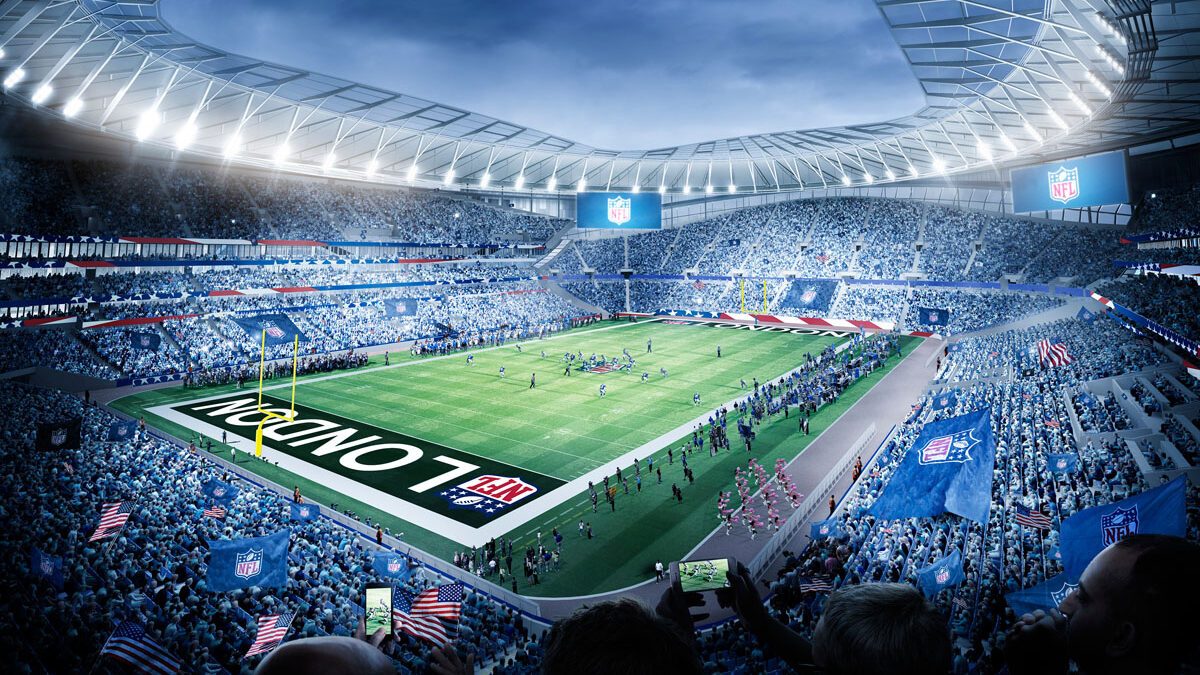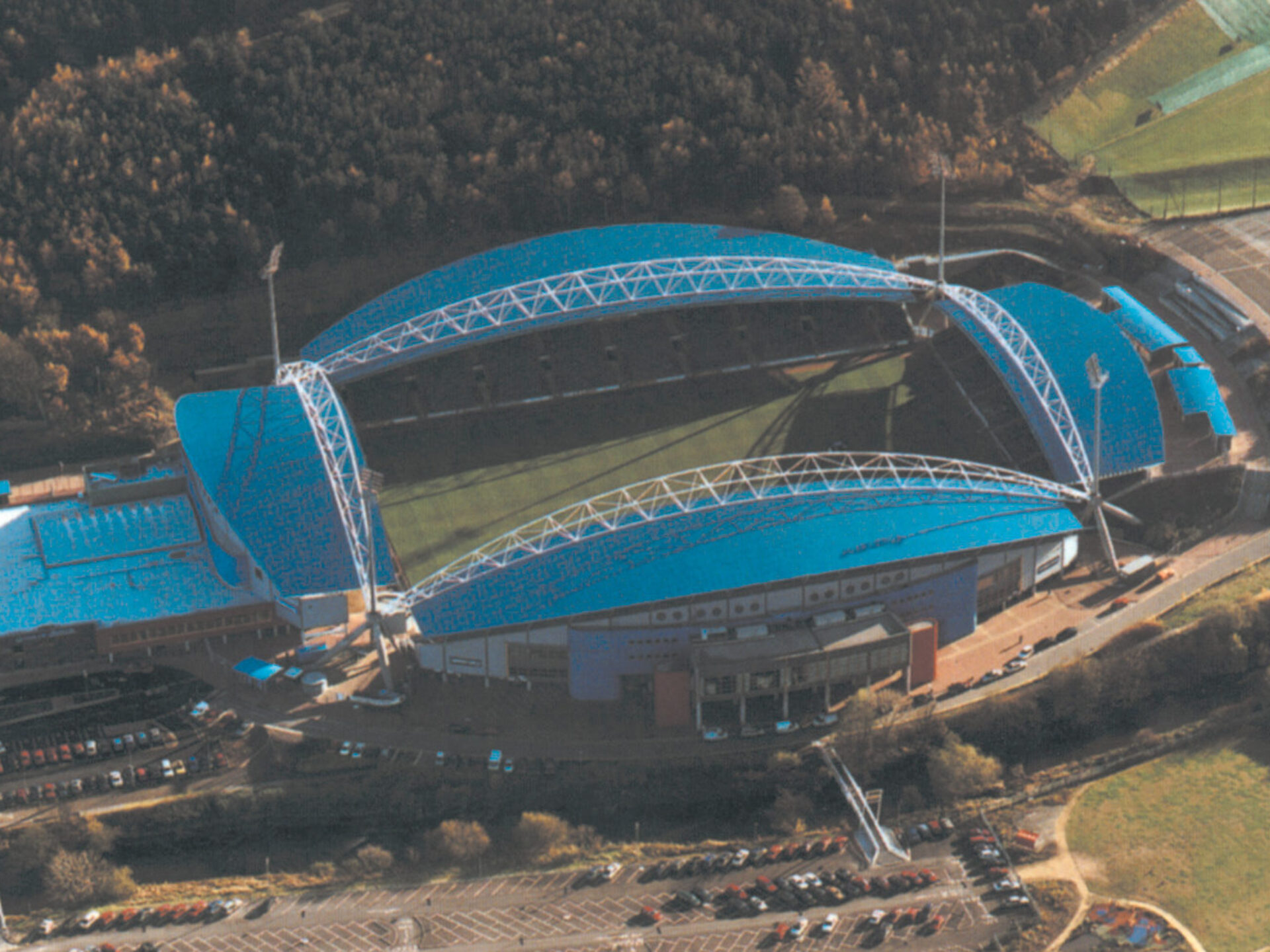Perspectives

August 20, 2019

The term ‘groundbreaking’ is often bandied about in architecture, but there is no better adjective to describe the John Smith’s Stadium.
Opened in 1994, it is the building that rewrote the rulebook on sports architecture, won unprecedented awards for design, and pioneered a new business model for year-round revenue generation—forever changing the way these venues would be considered by architects, clubs and spectators.
The project resulted from a review and safety assessment of Huddersfield Town FC’s existing Leeds Road ground. The club wanted a new home that would be worthy of a new era. It formed a consortium with rugby league side Huddersfield Giants and the local council to secure funding, and commissioned a limited design competition for a new stadium, to be used jointly by both clubs, that would meet the requirements of the next 50 years.
"A decade ago it would not be possible to find a football stadium that warranted a second glance, let alone one that had won an excellence in design award."
The winning scheme by Populous was based on Stadium for the Nineties, a theoretical project developed by the practice for the UK Sports Council. Crucially, the design was in full compliance with the new legislation of the Taylor Report, published in the wake of the Hillsborough stadium disaster of 1989. It also embraced new technology to provide improved sightlines for spectators in all areas of the ground.
Populous developed a computer program to create a digital 3D model of the project, allowing its designers to generate different viewing positions within the seating bowl and relate them to other important factors such as escape time and disabled access. The result was four futuristic orange-segment shapes as stands, high and deep in the centre, low and shallow at the ends—a far cry from the box-like structures that had been the norm at football grounds since the 1930s.
Stadium design provides an almost unparalleled opportunity to combine architecture and engineering. And in this respect, the John Smith’s Stadium was also ahead of its time. The curved roof trusses, affectionately known as the ‘banana trusses’, carry the full weight of the structure without the need for supporting columns, allowing uninterrupted viewing from every seat. Though this proved expensive in material costs compared to a traditional roof system, the saving in weight, flexibility of use and ease of erection resulted in an overall saving on the project, and the unusual shape of the trusses gave the stadium a swagger that turned heads across the architecture world.
“Before this project I don’t think big-name architects would have been interested in designing stadiums,” says Dale Jennins, Site Architect on the project,” they were seen as just these crinkly tin sheds built for containing people. But the John Smith’s changed all of that.”
Such was the elegance of the building’s form that, the year after it opened, the John Smith’s Stadium was awarded the Royal Institute of British Architects (RIBA) Building of the Year. It remains the only sports stadium to win the coveted prize to this day. Owen Luder, then-President of RIBA, commented at the time: “A decade ago it would not be possible to find a football stadium that warranted a second glance, let alone one that had won an excellence in design award.”
The John Smith’s Stadium broke all the conventions of a football stadium as a cold, unwelcoming building offering little more than a plastic cup of tea and a pie on a dingy corridor. It was a deliberate policy of the interior design team, led by interiors specialist Megan Ashfield, to use a variety of vibrant colours throughout the building. Where other architects would have used solid walls around the lifts and stairs, Populous used glass blocks, trimmed in the blue and white of the town’s football colours, to offer visibility and uplift.
As one of the earliest examples of a multi-use stadium, to be shared by two professional clubs playing different sports, part of the brief called for the co-occupiers of the venue to be able to function as independently as possible. This is reflected in the distribution of permanent accommodation for each party. Club offices with their own private entrances and dedicated entertainment areas help establish a sense of identity in a shared facility.
Kirklees Council’s 40% ownership stake added a third dimension to the design challenge. The aim was for the stadium to be seen as belonging to the community, rather than any particular corporate entity, with all the connotations of civic pride and open access which this entailed. The river corridor that runs alongside the development, formerly a neglected industrial backwater, was converted into a green corridor with the stadium as its focal point. The wider site incorporated a multi-screen cinema and golf driving range, while a swimming pool, gym, dance studio, offices, private boxes which convert into hotel rooms and a 500-seat banqueting hall were designed within the stadium structure itself.
These facilities created new opportunities for the clubs and council to earn revenue other than through the turnstiles—a relatively novel concept at the time, but one which has become the bedrock of modern stadium development schemes.
The project was a success on and off the field. Huddersfield Town FC won promotion in the first season in their new home—with attendances double what they had been in previous years—and went on to stage Premier League football at the ground in the last two years.
The Giants have also enjoyed good times in front of their fans, while the stadium itself successfully fulfilled its multi-use potential when it hosted R.E.M. for its first concert in July 1995, which was attended by around 80,000 people.
Beyond creating a major new attraction in the region, the stadium skilfully sidestepped the popular image of Huddersfield as a town of textile mills in the shadow of a massive chemical works, moving perceptions from the industrial to the post-industrial era. Commenting at the time, Dr Brian Edwards, Professor of Architecture, University of Huddersfield, went as far as to suggest that in the John Smith’s Stadium Huddersfield “has created an important development magnet for the next century.”
The immediate legacy for Populous was for a new, scalable design approach. It formed the inspiration for the practice’s 104,000 capacity 2000 Sydney Olympic Stadium, which required four separate stands in order that the seating capacity could be reduced down after the Games with the removal of temporary seating at the north and south ends. To look at the stadium in its original configuration, with two orange-segment shapes as main stands and curved steel trusses supporting the roofs, the distinctive form of the John Smith’s is unmistakeably present.
25 years on, and in the eyes of Jennins the project’s greatest achievement remains how it has changed people’s perceptions: “I did a stadium for my final dissertation at university and my tutor told me that they weren’t proper architecture. Can you imagine that now? With stadiums like Tottenham Hotspur’s new ground and Wembley… that argument doesn’t hold water anymore, and it’s down in large part to the John Smith’s. That’s the real legacy of this project—it changed people’s perceptions of what a stadium was, and expanded the possibilities of what it could be if you left your preconceptions at the door and really thought outside of the box.”
Lorem ipsum dolor sit amet consectetur, adipisicing elit. Non facere corporis et expedita sit nam amet aut necessitatibus at dolore enim quis impedit eius libero, harum tempore laboriosam dolor cumque.
Lorem, ipsum dolor sit amet consectetur adipisicing elit. Illo temporibus vero veritatis eveniet, placeat dolorem sunt at provident tenetur omnis, dicta exercitationem. Expedita quod aspernatur molestias eum? Totam, incidunt quos.